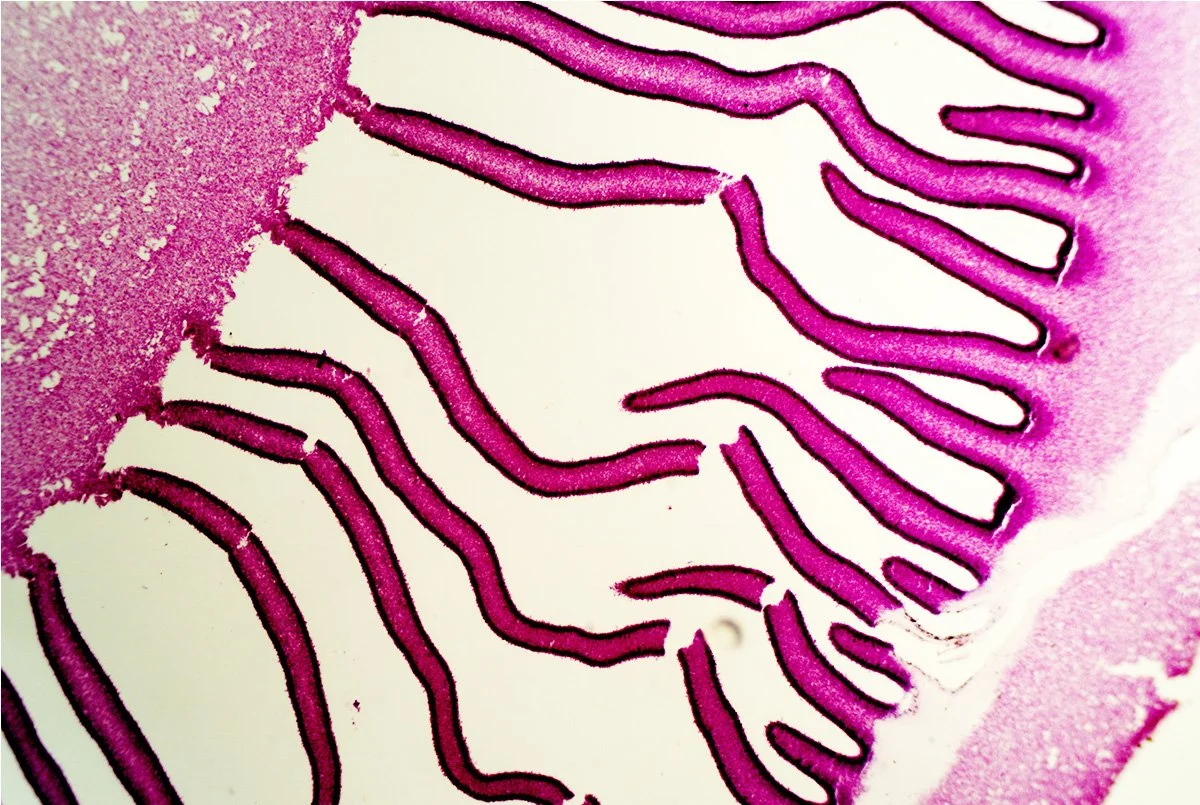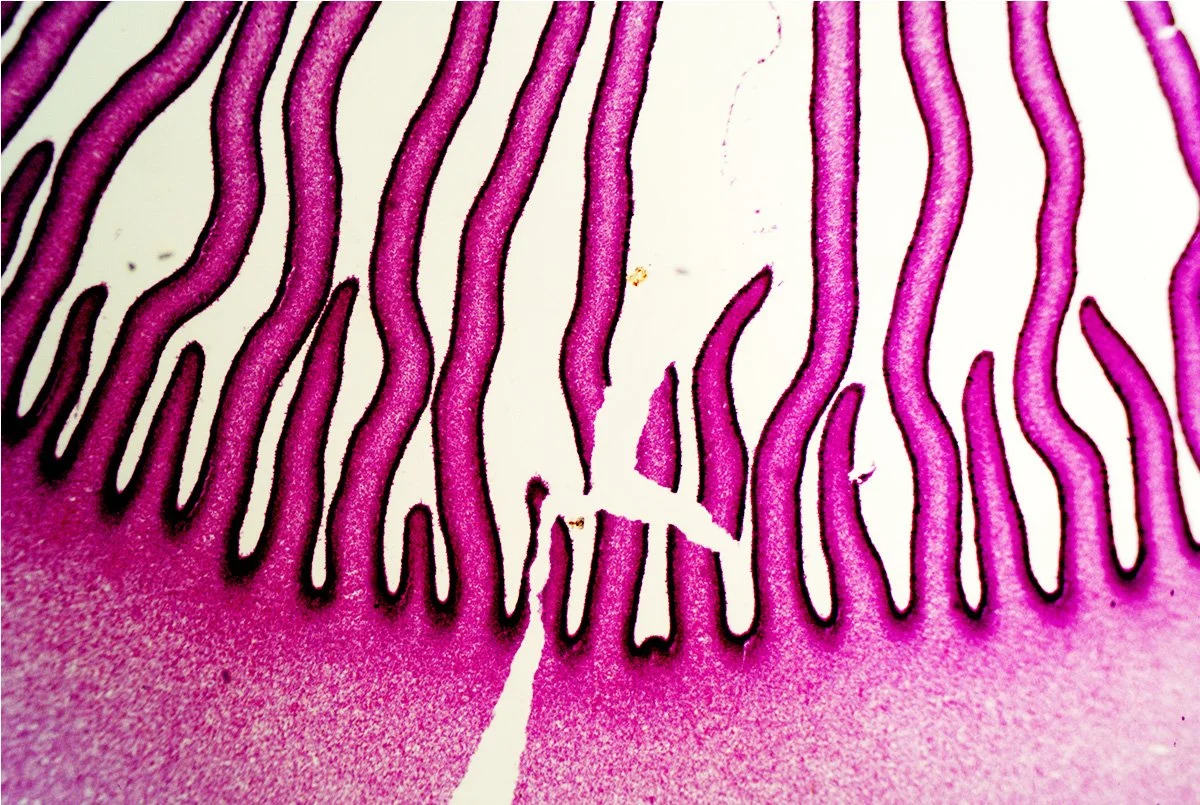What appears ordinary in the kitchen becomes extraordinary under the microscope.
This gallery showcases the epidermal layer of the onion (Allium cepa)—a single-cell-thick tissue that has become a cornerstone of biological study.







Through its transparent, tile-like arrangement, the onion epidermis reveals a world of symmetry, structure, and cellular function that often goes unseen.
This tissue—so simple to isolate and stain—has been used for generations to teach students the fundamentals of cell biology, mitosis, and membrane permeability.
But beyond the classroom, the onion epidermis plays a role in the scientific exploration of barrier function, antimicrobial compounds, and plant-pathogen interactions. As the outermost layer of the onion bulb, it serves as a defensive shield—physically tough and chemically active. Onions naturally produce sulfur-containing compounds and antimicrobial enzymes that deter bacterial and fungal invaders.